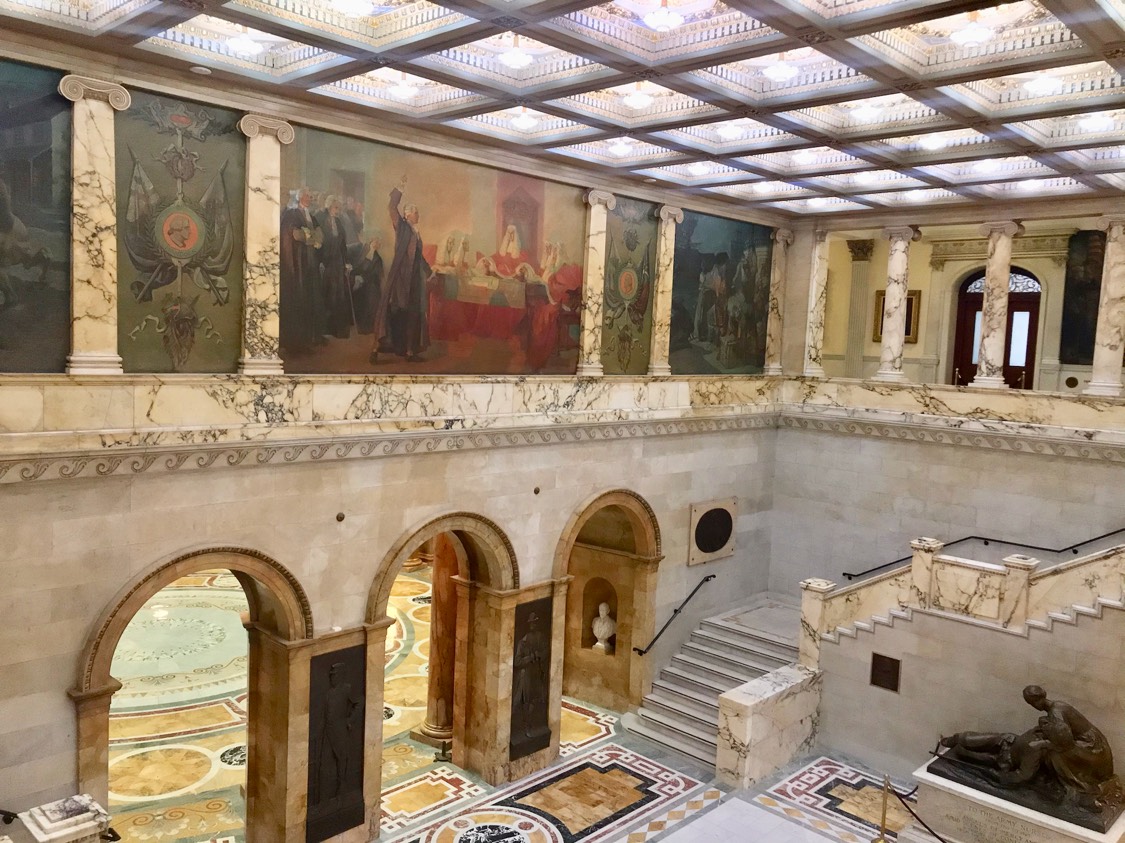
Audio Transcript
Stop 4. Nurses Hall. This room, built largely of Italian marble, is called Nurse's Hall because of the statue of an army Warners located on your right. Sculpted in 1914 by Bella Pratt. It was the first statue erected in honor of the women who served during the Civil War. It memorializes all the Civil War Army nurses from Massachusetts, such as Dorothea Dix, superintendent of all nurses.
Sarah Barton, founder of the American Red Cross. And Louisa may Alcott, the author of Little Women Nurses Hall, also features several murals painted by Robert Reed that depict events crucial to the start of the American Revolution. On the left, you can see Paul Revere's ride of April 19th, 1775. And on the right is the Boston Tea Party. The central panel depicts James Otis, a lawyer, arguing against the writs of assistance which allowed British soldiers to enter private homes and shops without warning or warrant in search of goods on which they suspected taxes had not been paid.
Otis presented his case in February 1761 to the Massachusetts Superior Court, although he did not win the case. This court case influenced the writers of the U.S. Constitution, who passed the Fourth Amendment, which states that searches or seizures cannot be carried out without a specific warrant.